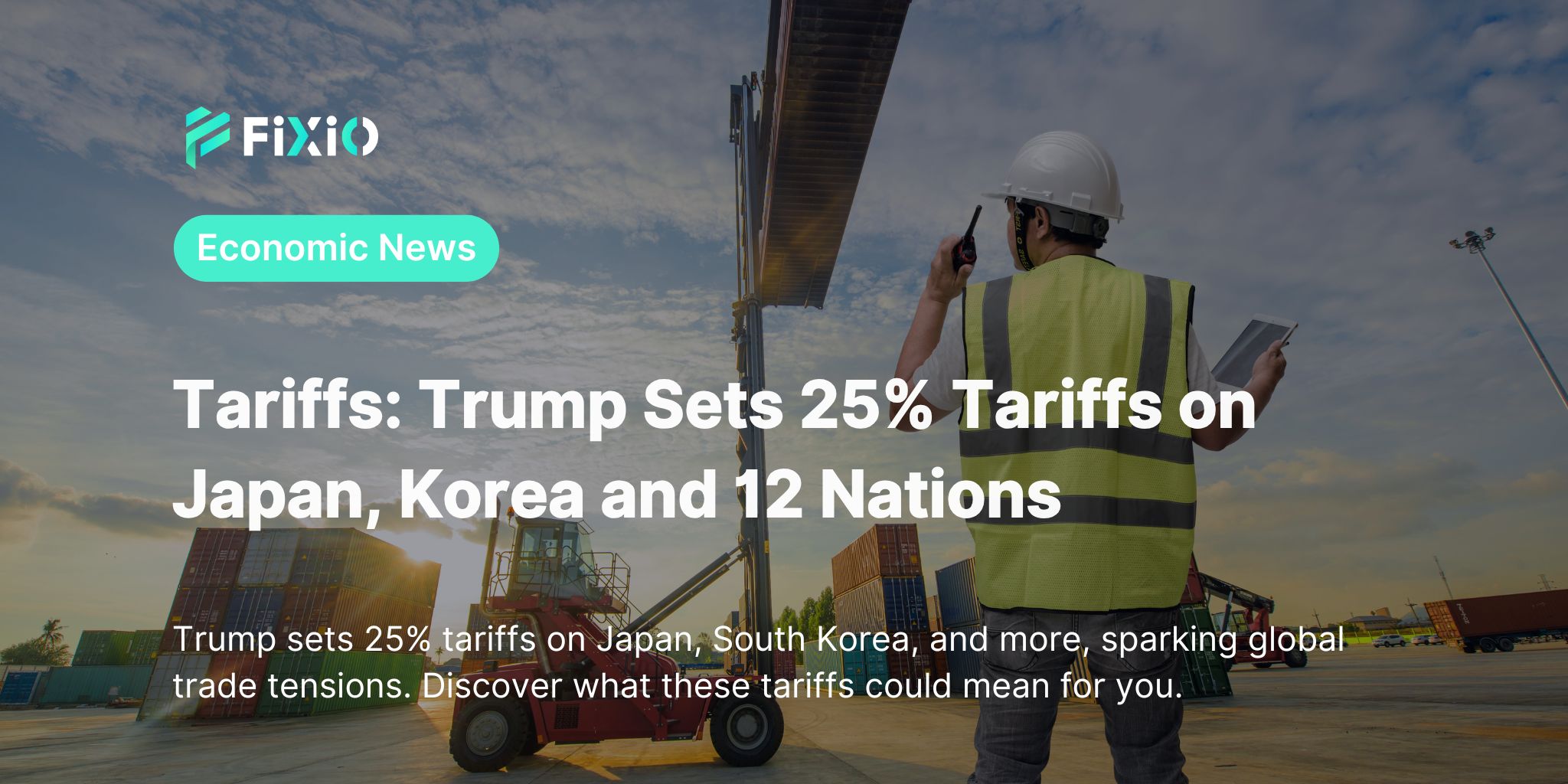
Are tariffs the answer to economic challenges, or do they threaten global stability? This question takes center stage as President Donald Trump imposes a sweeping new wave of tariffs—25% on imports from Japan and South Korea, along with significant new duties on twelve additional nations. As headlines buzz and markets react, many are left wondering how tariffs could affect businesses, consumers, and international trade dynamics in the months ahead.
At its core, a tariff is a government-imposed tax on imported goods. The goal can be to protect domestic industries, raise revenue, or negotiate better trade terms. Throughout history, tariffs have been a controversial economic tool, sometimes fostering growth, but often sparking trade wars and retaliatory measures from other countries. In recent years, especially since the start of the Trump tariffs era, these duties have dominated discussions among policymakers and business leaders alike.
On Monday, President Trump announced the latest escalation in his trade strategy: a 25% tariff on all imports from Japan and South Korea. In addition, goods from twelve other countries—including Myanmar, Laos, Cambodia, Thailand, Serbia, Bangladesh, Indonesia, South Africa, Bosnia and Herzegovina, Kazakhstan, Malaysia, and Tunisia—will face new tariffs ranging from 25% up to 40%. According to Trump, these measures are designed to bring manufacturing back to American soil and to support recently signed tax cuts.
| Japan & South Korea | 25% tariff on imports |
| Myanmar & Laos | 40% |
| Cambodia & Thailand | 36% |
| Serbia & Bangladesh | 35% |
| Indonesia | 32% |
| South Africa & Bosnia and Herzegovina | 30% |
| Kazakhstan, Malaysia, Tunisia | 25% |
These changes are set to take effect on August 1, 2025, leaving just weeks for last-minute negotiations or possible revisions. If affected countries retaliate, Trump warned that the U.S. will raise its tariffs even further.
Trump’s justification for this move is rooted in the idea that tariffs can reverse trade deficits and promote domestic production. Historically, the United States has run significant trade imbalances with countries like Japan and South Korea. In 2024 alone, the U.S. recorded a $69.4 billion deficit with Japan and $66 billion with South Korea (trade balance). By imposing new tariffs, Trump hopes to level the playing field and bring jobs back to American workers. Yet, critics argue that higher import tariffs can increase costs for consumers, strain diplomatic ties, and disrupt global supply chains. They warn that such policies may lead to retaliatory tariffs, slower economic growth, and increased uncertainty for investors and manufacturers worldwide.
The announcement sent ripples through global financial markets. The S&P 500 dropped by 0.8% on Monday, reflecting anxiety among investors. At the same time, interest rates on 10-year U.S. Treasury notes surged to 4.39%, potentially leading to higher mortgage and auto loan costs. Retailers, who depend on imported goods from affected countries, now face tough choices—either absorb higher costs or pass them on to consumers, fueling inflation.
Reactions from targeted countries were swift. South Korea’s Trade Ministry pledged to accelerate talks with the U.S., hoping to reach a compromise before the new tariffs take effect. Japan and other key partners expressed disappointment, noting their contributions to American economic and security interests in industries like semiconductors, shipbuilding, and critical minerals. Meanwhile, South Africa’s government issued a statement rejecting the characterization of its trade relationship with the U.S. and urging further diplomacy. These exchanges underscore the challenges of using tariffs as a negotiation tool and highlight the risk of turning close partners into rivals.
Legally, the U.S. Constitution grants Congress the power to levy tariffs, but executive orders—especially in cases of economic emergency or national security—have given presidents more authority in recent decades. Trump declared an economic emergency to justify these latest moves. However, this approach faces legal challenges, with critics arguing that such sweeping use of executive power oversteps traditional limits.
The debate over protectionism is as old as international trade itself. While some argue that tariffs can shield domestic industries and preserve jobs, others believe they undermine economic cooperation and increase costs for everyone. The new tariffs are likely to affect not only prices but also supply chains, especially for products like electronics, cars, and industrial materials. History shows that trade wars, triggered by rising tariffs, often result in mutual economic pain. For example, the Smoot–Hawley Tariff Act of the 1930s deepened the Great Depression by provoking global retaliation and stalling trade.
If you buy goods made in Japan or South Korea—like cars, electronics, or appliances—these tariffs could soon raise prices. Businesses that rely on imported raw materials may also feel the pinch, forcing them to adjust their operations, cut costs, or look for suppliers in other countries. Some large retailers might try to absorb these new expenses, but others may have no choice but to increase prices for consumers. At the same time, Trump has warned companies like Walmart not to pass the costs of tariffs onto shoppers, suggesting instead that they “eat” the losses. However, most economists agree that the effects of tariffs usually ripple through the entire economy, making it hard for any single business to shield customers entirely.
While Trump has signaled openness to further talks, the immediate future remains uncertain. Trade deals are notoriously complex, often taking years to finalize. So far, Trump’s administration has promised “90 deals in 90 days” but achieved only a handful of agreements. The letters sent to foreign leaders were not formal treaties but more like opening bids—an unusual and unpredictable approach to global trade diplomacy. Some countries, such as Vietnam and the United Kingdom, have managed to negotiate partial exemptions or reduced rates for specific goods. Others may seek similar arrangements in the coming weeks. Yet, the overall landscape remains highly fluid, with new tariffs—and possible retaliatory measures—looming over future trade talks.
This isn’t the first time Trump has wielded tariffs as a bargaining chip. During his first term, he celebrated new agreements with South Korea and Japan—yet today’s renewed tariff hikes suggest those deals didn’t live up to expectations. Trump has also threatened higher tariffs on goods from countries associated with BRICS (Brazil, Russia, India, China, South Africa, and others), signaling his broader approach to reshaping global commerce through aggressive use of trade barriers.
Ultimately, the impact of tariffs depends on your perspective. For some, they offer a pathway to revive domestic industries, reduce trade deficits, and secure a stronger negotiating position. For others, they risk higher costs, lost alliances, and economic instability. As new tariffs come into force this August, both consumers and businesses should stay alert for updates, price changes, and evolving trade relationships.
Tariffs have always sparked heated debates about growth, fairness, and sovereignty. In today’s interconnected world, every new tariff can trigger a chain reaction felt across continents. Whether these latest U.S. measures will achieve their intended goals remains to be seen, but one thing is certain: the global economy will be watching every move. How will you and your business adapt to the changing landscape of tariffs? Stay informed with the latest Forex trading news and analysis. Visit our website now at: https://fixiomarkets.com/en/prex-blogs
Trump sets 25% tariffs on Japan, South Korea, and more, sparking global trade tensions. Discover what these tariffs could mean for you.
Superior trade execution & trading conditions with the NDD method.

The online FX industry provides a platform for investors worldwide to engage in the buying and selling.

Subscribe to our daily newsletter and get the best forex trading information and markets status updates
Trade within minutes!
Comment (0)